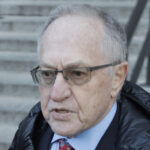
The unemployment rate reached 3.7% in the month of October as payrolls rose by 261,000, according to a Friday report from the Bureau of Labor Statistics.
The health care sector saw the most robust employment gains, while professional services and manufacturing likewise witnessed notable increases. The hospitality industry continues to suffer most from labor shortages, with employment continuing to remain well below levels seen at the beginning of 2020.
Jobless rates have remained between 3.5% and 3.7% for much of the year. The most recent figures indicate a 0.2% uptick from levels recorded in September.
“The October employment report is more of a mixed bag than we’ve seen recently, consistent with an economy absorbing this year’s interest rate increases, a strong dollar, high inflation, and challenges confronting the global economy,” Bankrate Senior Economic Analyst Mark Hamrick said in remarks provided to The Daily Wire. “Hiring failed to keep pace with the robust trends of the past couple of years. It is quite possible that we’ve seen the low established in the unemployment rate for a while.”
Payroll numbers were better than expected, although analysts forecasted unemployment to remain at a 3.5% rate. The Dow Jones Industrial Average gained 345 points, or 1.1%, on the news, while the S&P 500 and Nasdaq respectively ticked upward 1.4% and 1.6%.
The employment report was released days after the Federal Reserve raised the target federal funds rate by 0.75% for the fourth consecutive time, even as policymakers reassured markets that they will avoid establishing an overly zealous contractionary monetary regime. Rate hikes discourage economic activity by increasing borrowing costs for consumers and businesses. The central bank is attempting to quell inflation, which rose year-over-year at an 8.2% rate as of two months ago, according to data from the Bureau of Labor Statistics.
“Over the next year, the pace of hiring is likely to slow sharply,” Hamrick added. “This report alone won’t sway the Federal Reserve to adopt a new tact on rising interest rates. It has a lot more data to digest, including on inflation, before the next policy-setting meeting in mid-December.”
President Joe Biden reacted to the employment news, which comes days before the midterm elections, as a sign that the labor economy “remains strong” under his watch, despite some signs of a hiring slowdown.
“Inflation is our top economic challenge, and I know that American families are feeling squeezed. The global inflation that is raging in other countries is hitting us as well. I’ve got a plan to bring costs down, especially for health care, energy, and other everyday expenses,” the commander-in-chief said in a statement. “We’re going to do what it takes to bring inflation down. But as long as I’m president, I’m not going to accept an argument that the problem is that too many Americans are finding good jobs.”
Various economic bottlenecks have decreased living standards as inflation surpasses wage growth. Polls show that voters, who indicate higher trust for Republicans than Democrats in handling economic policy, have their eyes on the economy more than any other issue, including controversial social issues such as abortion or concerns about the strength of democracy.
Story cited here.
Scroll down to leave a comment:







